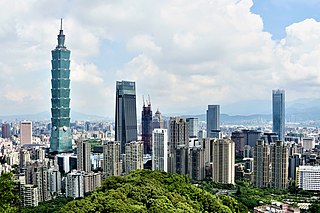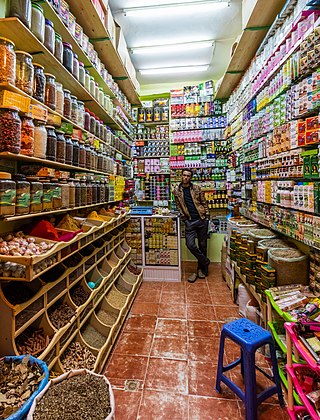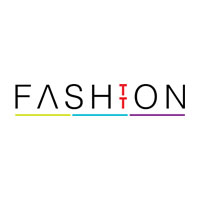
In commerce, supply chain management (SCM) deals with a system of procurement, operations management, logistics and marketing channels, through which raw materials can be developed into finished products and delivered to their end customers. A more narrow definition of supply chain management is the "design, planning, execution, control, and monitoring of supply chain activities with the objective of creating net value, building a competitive infrastructure, leveraging worldwide logistics, synchronising supply with demand and measuring performance globally". This can include the movement and storage of raw materials, work-in-process inventory, finished goods, and end to end order fulfilment from the point of origin to the point of consumption. Interconnected, interrelated or interlinked networks, channels and node businesses combine in the provision of products and services required by end customers in a supply chain.

The economy of Taiwan is a highly developed free-market economy. It is the 8th largest in Asia and 20th-largest in the world by purchasing power parity, allowing Taiwan to be included in the advanced economies group by the International Monetary Fund. Taiwan is notable for its rapid economic development from an agriculture-based society to an industrialised, high-income country. This economic growth has been described as the Taiwan Miracle. It is gauged in the high-income economies group by the World Bank. Taiwan is one of the most technologically advanced computer microchip and high-tech electronics industries makers in the world.

Retail is the sale of goods and services to consumers, in contrast to wholesaling, which is the sale to business or institutional customers. A retailer purchases goods in large quantities from manufacturers, directly or through a wholesaler, and then sells in smaller quantities to consumers for a profit. Retailers are the final link in the supply chain from producers to consumers.
Marketing management is the strategic organizational discipline that focuses on the practical application of marketing orientation, techniques and methods inside enterprises and organizations and on the management of marketing resources and activities. Compare marketology, which Aghazadeh defines in terms of "recognizing, generating and disseminating market insight to ensure better market-related decisions".

Research and development is the set of innovative activities undertaken by corporations or governments in developing new services or products. R&D constitutes the first stage of development of a potential new service or the production process.
An export in international trade is a good produced in one country that is sold into another country or a service provided in one country for a national or resident of another country. The seller of such goods or the service provider is an exporter; the foreign buyers is an importer. Services that figure in international trade include financial, accounting and other professional services, tourism, education as well as intellectual property rights.

Service economy can refer to one or both of two recent economic developments:
A value chain is a progression of activities that a business or firm performs in order to deliver goods and services of value to an end customer. The concept comes from the field of business management and was first described by Michael Porter in his 1985 best-seller, Competitive Advantage: Creating and Sustaining Superior Performance.
The idea of [Porter's Value Chain] is based on the process view of organizations, the idea of seeing a manufacturing organization as a system, made up of subsystems each with inputs, transformation processes and outputs. Inputs, transformation processes, and outputs involve the acquisition and consumption of resources – money, labour, materials, equipment, buildings, land, administration and management. How value chain activities are carried out determines costs and affects profits.

Acer Inc. is a Taiwanese multinational company that produces computer hardware and electronics, headquartered in Xizhi District, New Taipei City, Taiwan. Its products include desktop PCs, laptop PCs, tablets, servers, storage devices, virtual reality devices, displays, smartphones, televisions and peripherals, as well as gaming PCs and accessories under its Predator brand. As of 2024, Acer is the world's sixth-largest personal computer vendor by unit sales.
A strategic alliance is an agreement between two or more parties to pursue a set of agreed upon objectives needed while remaining independent organizations.
The pharmaceutical industry is one of the leading industries in the People's Republic of China, covering synthetic chemicals and drugs, prepared Chinese medicines, medical devices, apparatus and instruments, hygiene materials, packing materials, and pharmaceutical machinery. China has the second-largest pharmaceutical market in the world as of 2017 which is worth US$110 billion. China accounts for 20% of the world's population but only a small fraction of the global drug market. China's changing health-care environment is designed to extend basic health insurance to a larger portion of the population and give individuals greater access to products and services. Following the period of change, the pharmaceutical industry is expected to continue its expansion.
Electronics manufacturing services (EMS) is a term used for companies that design, manufacture, test, distribute, and provide return/repair services for electronic components and assemblies for original equipment manufacturers (OEMs). The concept is also referred to as electronics contract manufacturing (ECM).

Fast fashion is the business model of replicating recent catwalk trends and high-fashion designs, mass-producing them at a low cost, and bringing them to retail quickly while demand is at its highest. The term fast fashion is also used generically to describe the products of this business model, particularly clothing and footwear. Retailers who employ the fast fashion strategy include Primark, H&M, Shein, and Zara, all of which have become large multinationals by driving high turnover of inexpensive seasonal and trendy clothing that appeals to fashion-conscious consumers.

Manufacturing is a vital economic sector in the United States of America. The United States is the world's second-largest manufacturer after the People's Republic of China with a record high real output in 2021 of $2.5 trillion.
A global value chain (GVC) refers to the full range of activities that economic actors engage in to bring a product to market. The global value chain does not only involve production processes, but preproduction and postproduction processes.
Product strategy defines the high-level plan for developing and marketing a product, how the product supports the business strategy and goals, and is brought to life through product roadmaps. A product strategy describes a vision of the future with this product, the ideal customer profile and market to serve, go-to-market and positioning (marketing), thematic areas of investment, and measures of success. A product strategy sets the direction for new product development. Companies utilize the product strategy in strategic planning and marketing to set the direction of the company's activities. The product strategy is composed of a variety of sequential processes in order for the vision to be effectively achieved. The strategy must be clear in terms of the target customer and market of the product in order to plan the roadmap needed to achieve strategic goals and give customers better value.

The Trinidad and Tobago Fashion Company Limited (FashionTT) was established in 2013. As a subsidiary of the Trinidad and Tobago Creative Industries Company Limited (CreativeTT), FashionTT’s mandate is "to stimulate and facilitate the business development and export activity of the fashion industry in Trinidad and Tobago to generate national wealth." The company provides capacity development workshops, growth strategies and linkages with foreign buyers for local fashion industry stakeholders.
Global advertising or international advertising consists of collecting, processing, analyzing and interpreting information. There are two main purposes of international advertising research: (1) to assist business executives to make profitable international advertising decisions for their specific products and services and (2) to contribute to general knowledge of international advertising that is potentially useful to a variety of business executives, educators, government policy makers, advertising self-regulatory organizations and others interested in understanding the process and effects international advertising.
Longrich(Chinese: 隆力奇; pinyin: Lónglìqí:)Bioscience Co., Limited is a multinational company that sells health, organic food, nutritional supplements, beauty, home care and pet care products. Longrich operates under its holding company Jowell Global.

Global Value Chains and Development: Redefining the Contours of 21st Century Capitalism is a 2018 book by American economic sociologist and academic Gary Gereffi published by Cambridge University Press and part of their Development Trajectories in Global Value Chains series. The book discusses the Global Value Chains (GVC) framework, pioneered by Gereffi in the mid-1990s and early 2000s. It focuses on how buyer-driven supply chains, led by retailers and global brands, shifted production in many international industries to low-cost developing economies. The GVC framework revolves around "governance" and "upgrading". The chapters include key articles on global commodity chains and case studies on Mexico's and China's impact on the U.S. manufacturing sector. The concept of "social upgrading" and "synergistic governance" emerged to address social concerns. The rise of emerging economies led to greater regionalization of GVCs in the 2000s. After the 2008-09 economic crisis, GVCs adapted to a post-Washington-Consensus world marked by economic nationalism and populism. The GVC approach has influenced policymakers in international organizations and national economies, as well as academics.









